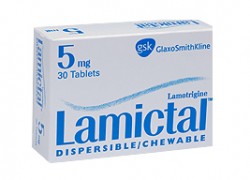Top Class Actions’s website and social media posts use affiliate links. If you make a purchase using such links, we may receive a commission, but it will not result in any additional charges to you. Please review our Affiliate Link Disclosure for more information.

These patients may choose to file Lamictal SJS lawsuits for themselves or on behalf of a loved one, since mostly children are affected, against the drug’s manufacturer for the pain, suffering, and medical expense endured by a SJS patient or patient’s family.
Lamictal (or Lamotrigine) is a drug used to treat epilepsy, seizures, and Lenoux-Gastaut Syndrome, a form of child-onset epilepsy. Since receiving U.S. Food and Drug Administration (FDA) approval in 2004, GlaxoSmithKline, the manufacturers of Lamictal, have been successful in marketing their anti-seizure drug within the U.S. medical community.
However, while this is one of the few FDA approved drugs to specifically treat Lenoux-Gastaut in children as young as 5 and relieve them of some painful seizure side effects, it appears that Lamictal is now under close scrutiny because of the drug’s link to SJS.
Stevens Johnson Syndrome and Toxic Epidermal Necrolysis (TEN), a more severe form of SJS, are both painful and often fatal skin conditions that occur due to an allergic skin reaction brought on by the consumption of any number of prescription and over-the-counter drugs, and most recently has been linked with the use of Lamictal.
Lamictal Stevens Johnson Syndrome Study
According to Lamictal clinical trials, about 10 percent of users of this anticonvulsant medication experienced a type of rash on their bodies, though not all were SJS rashes. Not all the Lamictal rashes were severe; however, in some patients the rashes were the first sign that they had contracted Lamictal SJS or TEN.
News reports and medical advisories recommend that if you experience a Lamictal SJS rash, you should immediately discontinue taking the drug and talk with your physician.
In a January 2009 issue of the Pediatrics medical journal, an SJS study was published, evaluating various medications and the risks they posed to young children with SJS and TEN.
This SJS study looked at 80 SJS cases with 216 matched control cases and also looked at data from two international studies conducted in France, Germany, Italy, Portugal, the Netherlands, Austria, and Israel.
All of the patients observed in this SJS study were children under the age of 15. According this study and the consolidated data, the researchers confirmed Lamictal and three additional drugs “were strongly associated with the risk of Stevens Johnson Syndrome or Toxic Epidermal Necrolysis.”
Stevens Johnson Syndrome Side Effects
When a patient develops SJS, a series of rashes begin to form on the skin that progress into a painful, burn-like states. As the SJS reaction becomes more severe, the topmost layer of skin cells die and fall off.
This sloughing of skin exposes the deeper, more sensitive skin layers and the delicate mucous membrane exposed to infection. In extreme Lamictal SJS cases, a patient may undergo so much trauma from the SJS and TEN skin reaction that they may die.
Some symptoms and side effects of Lamictal Stevens Johnson Syndrome to look out for in patients include:
- Painful blistering of the skin and mucous membrane involvement
- In many cases preceded with flu like symptoms and high fever
- As it evolves the skin literally sloughs off
- Ocular involvement includes severe conjunctivitis, iritis, palpebral edema, conjunctival and corneal blisters and erosions, and corneal perforation
Because of the pain young children often undergo from Lamictal SJS and TEN, many parents may decide to file a Lamictal SJS lawsuit or join a Steven Johnson Syndrome class action lawsuit.
Do YOU have a legal claim? Fill out the form on this page now for a free, immediate, and confidential case evaluation. The Stevens Johnson Syndrome attorneys who work with Top Class Actions will contact you if you qualify to let you know if an individual lawsuit or class action lawsuit is best for you. [In general, SJS lawsuits are filed individually by each plaintiff and are not class actions.] Hurry — statutes of limitations may apply.
ATTORNEY ADVERTISING
Top Class Actions is a Proud Member of the American Bar Association
LEGAL INFORMATION IS NOT LEGAL ADVICE
Top Class Actions Legal Statement
©2008 – 2024 Top Class Actions® LLC
Various Trademarks held by their respective owners
This website is not intended for viewing or usage by European Union citizens.
Get Help – It’s Free
Help for Victims of Stevens Johnson Syndrome
If you or a loved one were diagnosed with Stevens Johnson Syndrome (SJS) or toxic epidermal necrolysis (TEN) after taking a prescribed or over-the-counter medication, you may be eligible to take legal action against the drug’s manufacturer. Filing an SJS lawsuit or class action lawsuit may help you obtain compensation for medical bills, pain and suffering, and other damages. Obtain a free and confidential review of your case by filling out the form below.
An attorney will contact you if you qualify to discuss the details of your potential case at no charge to you.
Oops! We could not locate your form.












